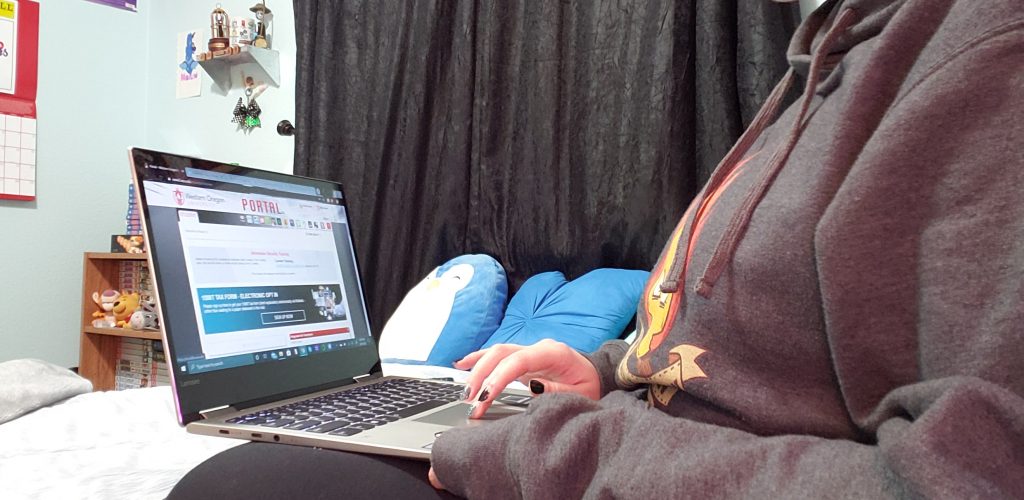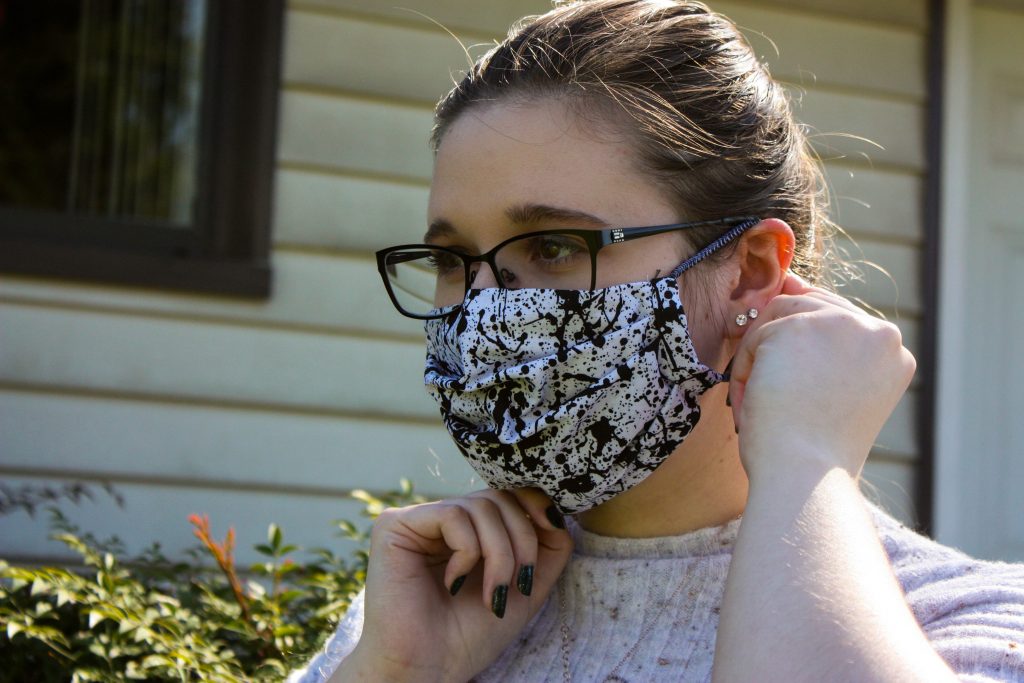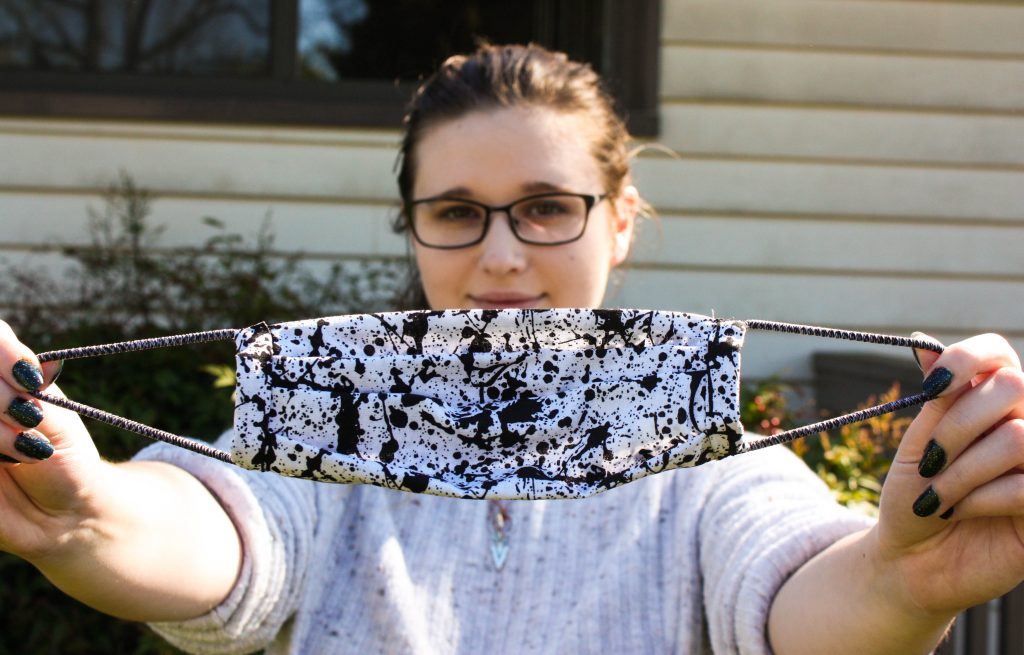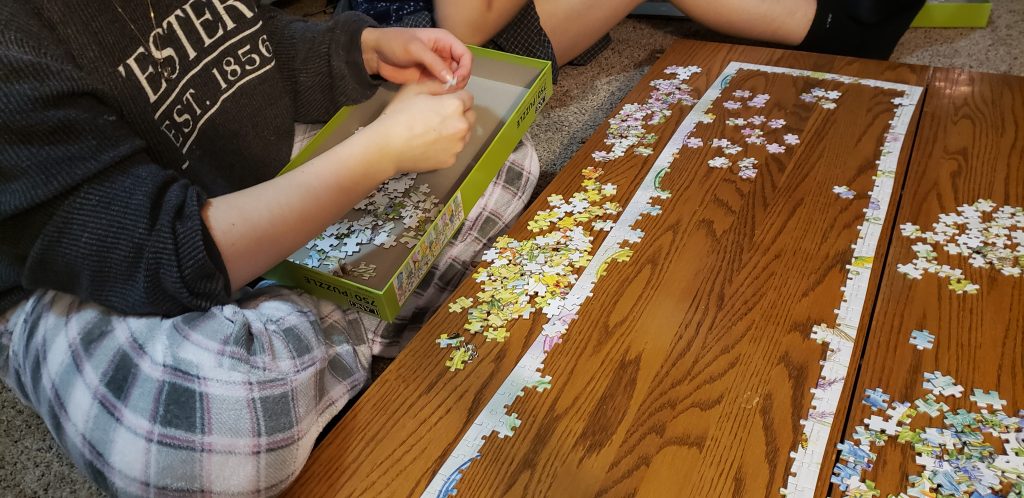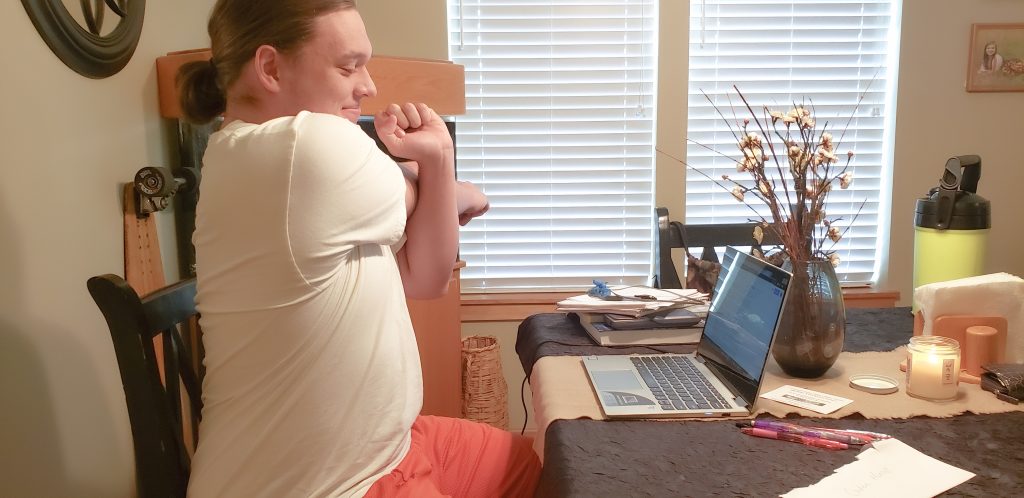
Rylie Horrall | Lifestyle Editor
Many students may find themselves working for long periods at a desk or table. With our current pandemic, some may note that they’re sitting even longer than normal. While sitting at a table or a desk may be better than working on a bed — according to info.achs.edu, it can decrease productivity due to less space to organize study materials — staying there for long periods can cause the body to ache or become stiff. However, this can be combated by stretching in various ways.
An easy one I always do is a ‘one armed hug’; reach one arm across the body and place it on the opposite shoulder, then use the other arm to push back on the elbow. Another way to do it is to extend the arm out instead of placing it on the opposite shoulder, so it’s draped across the chest.
A stretch I generally pair with the previous is one that I usually call an ‘up-and-over’ stretch. It’s done by putting one arm up and bending it back so the underside of the arm is facing the back of the head. Like the stretch before, use the opposite arm to push the elbow back, which will stretch the triceps.
To stretch the lower back, there’s a few options to help with stiffness and pain. There’s back extensions, which can be done a couple different ways — with palms placed flat against the lower back and then leaning back, or by interlocking hands above the head with palms facing the ceiling and pushing upwards. Both of these can be done while standing as well. Another option is a seated twist; by crossing one leg over the other then twisting the body towards the leg on top, this will stretch, and maybe pop, the lower back. Variations include crossing the arms over the chest, or using the arm of the chair to pull into a deeper stretch
For the legs, try sitting in an upright position and straightening the legs, then folding the body towards the toes. When I do this stretch, I like to try and touch my toes with my fingertips for a deeper stretch to my hamstrings. An important thing to keep in mind with this one is to keep the back as straight as possible.
There are some simple things that can be done while continuing to work or study. For instance, rotating the neck in a circle or even just tilting the head from side to side and front to back is an easy way to relieve neck pain caused by looking down for too long. Shrugging the shoulders and rolling them back can alleviate stiffness, and rotating the wrists in a circle counter-clockwise and then clockwise will help with pain.
An important thing to note is to pay attention to posture and to sit with the chair close to the desk or table to keep from hunching over. Sit back in the seat, and, if possible, try to keep a computer level with the eyes.
Contact the author at rhorrall17@wou.edu
Photo by Rylie Horrall


